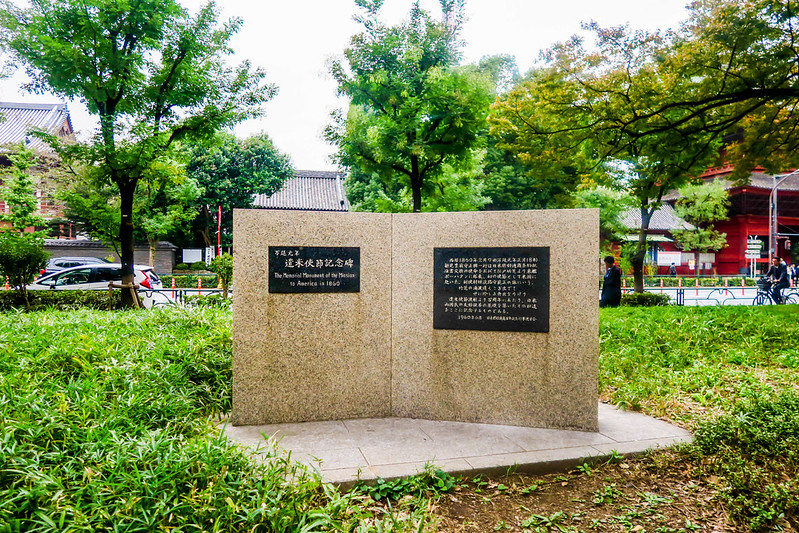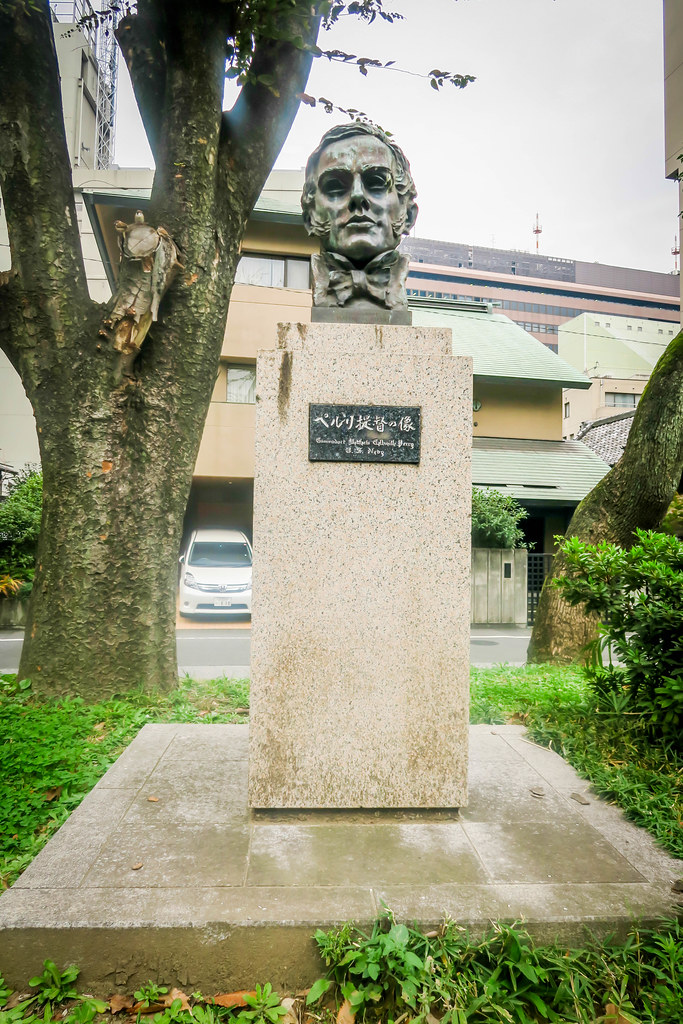
Right across the street from Zojoji Temple’s Sangedatsumon (Main Gate) is a resting area (or smoking area as that is what I see most people doing in this area) are a few monuments.
While part of Shiba Park which goes around Zojoji Temple and there are much better areas to visit around the park, this area is rather interesting for its monument to the 1860 mission and Commodore Perry.
One is for the Memorial Monument Mission to America in 1860. According to Wikipedia, “Its objective was to ratify the new Treaty of Friendship, Commerce, and Navigation between the United States and Japan, in addition to being Japan’s first diplomatic mission to the United States since the 1854 opening of Japan by Commodore Matthew Perry.”
“Another significant facet of the mission was the bakufu’s dispatch of a Japanese warship, the Kanrin Maru, to accompany the delegation across the Pacific and thereby demonstrate the degree to which Japan had mastered Western navigation techniques and ship technologies barely six years after ending its isolation policy of nearly 250 years.”
You can read even more about this from the MIT website on Visualizing Cultures.
The other monument you will find across the street from Zojoji Temple in Minato is a monument of Commodore Matthew Perry.

According to Wikipedia in regards to Commodore Matthew Perry, “He played a leading role in the opening of Japan to the West with the Convention of Kanagawa in 1854.
Perry was very concerned with the education of naval officers and helped develop an apprentice system that helped establish the curriculum at the United States Naval Academy. With the advent of the steam engine, he became a leading advocate of modernizing the US Navy and came to be considered The Father of the Steam Navy in the United States.”
Also according to wikipedia, “In 1852, Perry was assigned a mission by American President Millard Fillmore to force the opening of Japanese ports to American trade, through the use of gunboat diplomacy if necessary. The growing commerce between America and China, the presence of American whalers in waters offshore Japan, and the increasing monopolization of potential coaling stations by the British and French in Asia were all contributing factors. The Americans were also driven by concepts of manifest destiny and the desire to impose the benefits of western civilization on what they perceived as backward Asian nations. The Japanese were forewarned by the Dutch of Perry’s voyage, but were unwilling to change their 220-year-old policy of national seclusion. There was considerable internal debate in Japan on how best to meet this potential threat to Japan’s economic and political sovereignty.”

Another monument is featured at the entrance of this resting area in this part of Shiba Park.
Overall, it’s a place to visit for those fascinated by Japanese history and want to see these monuments, but there are other areas for one to bring their friends or family at Shiba Park, this certain area of the park is more like a smoking area these days that happens to be across the street from Zojoji Temple.

